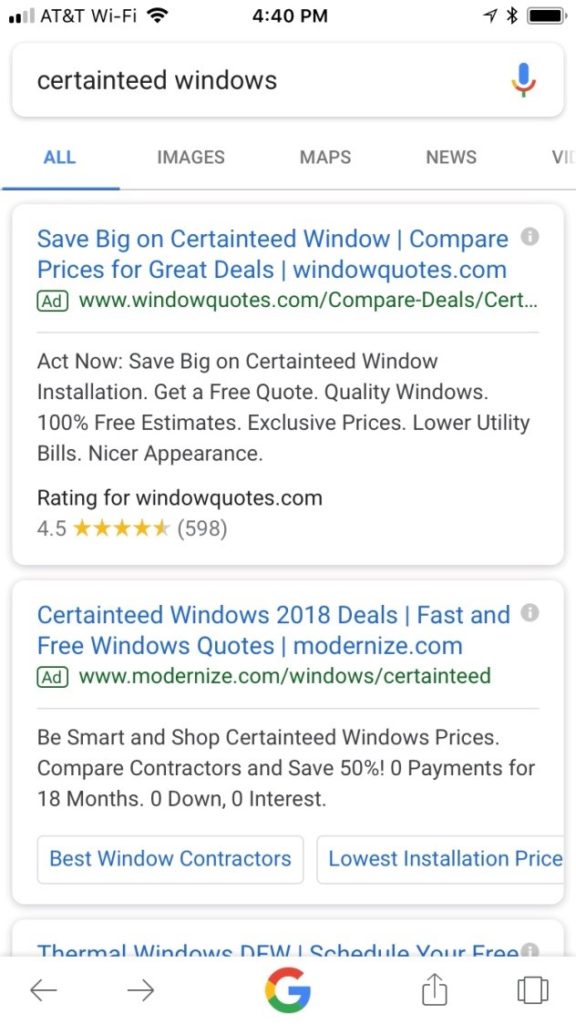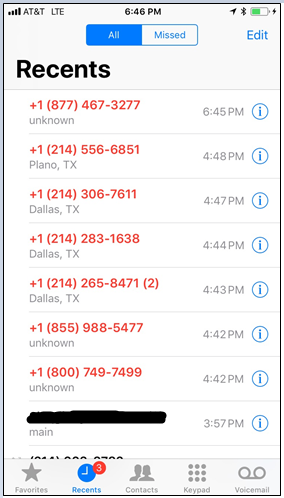Posted by Rich Harshaw on July 16, 2018.
.

What if your favorite football team hired a new coach who NEVER punted on 4th down?
Or went for an onside kick every single time, regardless of the score?
Or ALWAYS tried for the two-point conversion?
You’d probably want this new coach fired before he ever stepped onto the sideline.
I mean, conventional football wisdom says this is a horrible scheme.
But…
What if Coach Crazy’s plan turned your team into not just a competitor, but a perennial winner?
Sure, you’d probably think the coach is still a little nutso. But you know what they say—there’s a fine line between genius and madness.
Just ask Kevin Kelley, coach of Pulaski Academy’s high school football team.
Pulaski Academy is a private school in Arkansas. Before Kelly was hired by Pulaski in 2003, the school’s football team was terrible—basically the Cleveland Browns of Arkansas high school football.
Then Kelley came on board… with an outrageously off-the-wall game plan:
- NEVER punt… EVER?
- ALWAYS onside kick unless you’re up by 21 points or more
- Go for the two-point conversion NO MATTER WHAT
Before Pulaski Academy played it’s first game under Kelley, everyone heard about his crazy scheme.
Rival schools laughed. Parents got PO’ed. And even Kelley’s players scratched their heads.
This was NOT the right way to play football. It seemed reckless. Stupid. Even irreverent.
And then the games were actually played. Here’s what has happened since…
- Pulaski Academy football has won seven state championships
- Their record the past three years is 41-1
- They beat their opponents by almost 30 points per game
- Adidas has sponsored them
- College scouts regularly attend their games
After seeing the results, everybody who doubted Kelley changed their tune.
Now the team has national recognition. They basically NEVER lose. And major sports publications constantly interview Kelley to find out more about his unorthodox-yet-brilliant game plan.
All because Kelley had the stones to try something brazenly different than what was considered “acceptable.”
How To “Coach Kelley” Your Marketing…
Here’s the lesson: Don’t be afraid to try something crazy with your marketing. Especially if you’re not getting the results you want with your current plan.
I’m not talking about updating your logo. Or offering a 20% discount instead of a 15% discount. Or sending out three postcards instead of two. No one will care.
I’m talking earth-shaking ideas that will make people wonder if you need to be put in a straitjacket.
(Don’t worry—that last link is safe!)
All of these ideas spit in the face of what’s considered “acceptable” or “the norm.” But they worked spectacularly well not in spite of this… but BECAUSE of it.
Here is what you need to know if you want to create innovative marketing that works…
You have to have thick skin
In Malcom Gladwell’s 2009 New Yorker article called “How David Beats Goliath,” Gladwell says that innovators have to be willing to do things that are “socially horrifying.”
When you NEVER punt, people will think you’re a weirdo: Coaches, parents, opposing teams, and even your players. You must be willing to be hated by your competitors, mocked by “the establishment,” and even questioned by consumers.
You have to learn to be creative
Look at your business from EVERY angle. Leave no idea—no matter how weird or impractical it seems—off the table.
Avis knew they were the second most popular car-rental service. Ninety-nine out of 100 companies would never, ever think about saying that in an ad. But Avis said, “Well, why NOT say it in an ad?”
What’s that? You say you’re not creative? Boloney. It’s not that you’re not creative… it’s that you don’t know HOW to tap into your creative side.
There are plenty of great books on how to unleash your inner creative genius, so I won’t go into details here. But one piece of advice I can give you is to study successful stand-up comedians. Guys like Jerry Seinfeld, Larry David, and Jim Gaffigan dissect the mundane aspects of everyday life and look at them from new, unexplored angles. As a result, they can transform even the most boring things—like shopping at the supermarket—into something funny and interesting.
Make sure there is a method to your madness
Watch this highly entertaining 6-minute video about Kelley, and one thing becomes apparently clear: All of his zany schemes have statistics to support them.

Analytics show that never punting results in more points. Failed 4th-down conversions yield relatively few gains for the opponent. And always going for the two-point conversion instead of kicking the extra point is statistically a better option as long as you convert above 50%.
When an ad says “We’re No.2, so we try harder” that ad is going to get read. The same with a headline about a car that simply reads “Lemon.” Curiosity-based headlines are statistically proven to be effective.
—
Bottom line: When you get to 4th down, don’t be afraid to keep your offense out there.
People might think you’re crazy. And you may want to call an audible and go back to the same old safe “punt-on-4th-down” strategy you’ve been doing.
But stick with it… and make Coach Kelley proud.
-Rich
P.S. Since we’re discussing innovation, you should know that MYM has “Coach Kelley’ed” the pay-per-click game with No-Risk PPC.
- There is no monthly budget.
- You pay for the leads only AFTER we deliver them to you and you review them.
- We guarantee a cost per lead of $200 or less.
People in the industry think it’s nuts. Our competitors hate it. Contractors who aren’t clients wonder how the world it can possibly work.
Well, it does work… precisely BECAUSE it’s so different.
Posted by Rich Harshaw on July 10, 2018.
.

Last post, I touched on why it’s a bad idea to try third-party lead-aggregation services like HomeAdvisor and CraftJack.
In a nutshell, here’s why most contractors can’t stand these kinds of companies…
Too Much Competition
The HomeAdvisors and CraftJacks of the world sell the same leads to 3 to 20 other contractors. The unsuspecting homeowner who uses these sites will get incessant calls and dozens of emails… and they’ll regret the moment they ever clicked “Submit” on that online lead form.
You’ve got better things to do with your life than try out-elbow 17 other companies for a single lead (one that is likely to be highly irritated by the time you talk to them).
The Leads, By Definition, Are Price Shoppers
Lead generators put you in a pricing battle by promising to get you “multiple quotes” from prescreened pros. Take a look:

Lead- aggregators promising multiple quotes put prospects in a “price shopping” mind frame.
The very first expectation prospects are going to have from you is LOW PRICE. I don’t know about you, but I don’t offer the lowest prices, and I’m not interested in doing so.
You’ll Burn Through Your Budget
One of our clients had given $2,500 to CraftJack for 50 window leads at $50 a lead. After completely wasting their time trying to get in touch with the first 30 leads—with only two set appointments—our client called to quit.
When informed that there was a strict no-refund policy, the client actually told CraftJack to just keep the money. They’d rather take the financial loss than double their losses by wasting time chasing non-responsive leads.
Advice For People Who Insist On Jumping Into The Shark-Infested Waters Anyway…
You CAN mine some gold out of these leads. But you have to have strictly disciplined systems in place to make it happen.
Most companies I know that have success with lead-aggregation services are large and put a lot of resources into follow up. In other words, they have the systems in place to handle this type of lead generation.
Here is how to standing a fighting chance on third-party lead-aggregator websites:
React Quickly
And by quickly, I mean you’ve got like nano-seconds. You need to route the leads to somebody who has no other purpose in life besides dialing that phone and getting through to that lead the instant it arrives. Because you can bet your life that many of the other contractors who also just bought that lead are going to be right on top of it.
The statistics on this topic are staggering: If you fail to contact an internet lead within FIVE MINUTES, that lead is 100 times less likely to be contactable. Read that again. If you’ve ever bought an internet lead, called on it an hour after it came in, and were disappointed to find you couldn’t get in touch with anyone, now you know why. You should be shooting for one to five SECONDS to call the prospect. If you can’t play in that league, don’t play at all.
By the way, this is good advice for YOU, too… with ALL your leads. Even your PPC leads. Faster is ALWAYS better.
Be Persistent
This one seems antithetical to what I just said. But a few leads sometimes slip through that initial dogfight.
When that lead first comes in, the prospect is going to get slammed by contractors for two minutes to 24 hours. But then the calls will subside… which leaves an open to call 24 to 36 hours after the lead came in.
You can still find interested people—you just have to wait out the initial rush. Persistence pays, but it is a massive pain in the butt. Whoever is tasked with this job is going to hate it—be ready for that.
Get Great Software To Automate Follow Up
Immediately subscribe to MarketSharp, so you can manage all this automatically. It’s a great program that will take the leads FOR you and allow you to do any or all of the following: route the lead to somebody’s cell phone via text message; send an email or text message instantly to the prospect; set reminders for follow ups; generate mailers with personalized URLs. And more.
Bottom line: Lead aggregators aren’t for everyone. But you CAN see success with them. You just have to fight tooth and nail for every single lead.
Why fight for leads when you don’t have to?
Maybe you get a thrill out of battling for jobs… being the Last Contractor Standing… planting your flag on the fallen bodies of your competitors after a vicious and bloody battle for a lead. And that’s fine.
But I’m a lover, not a fighter.
If I were in your shoes, I’d rather NOT get leads by ripping every single one of them from my competitors’ hands.
That’s why we created No-Risk Pay Per Click.
The leads that No-Risk PPC generates come directly from YOUR website, so you are the only contractor who gets the lead.
You won’t have to duke it out with 12 other contractors. The lead is yours—and yours alone. And since the prospect is on YOUR website, they already know who you are, and why you are the best choice to buy from.
Since we guarantee a lead cost of $200 or less* and require no long-term commitment, you risk nothing. Feel free to try out the program to see if you like it. If you do, excellent! If you don’t, that’s okay—at least you generated some quality leads for a low cost.
Get in touch via email or our website for details about what No-Risk PPC can do for your specific situation.
Thanks!
-Rich
*In rare cases (about 5% of the time), the Guaranteed Cost Per Lead may be $300.00. This is due to ultra-competitive geographic areas, out-of-the-norm competitor PPC efforts, location in a very large metropolitan area, or extreme seasonal competition. Don’t worry—if this increase applies to you, you will be notified up front before you agree to start your campaign.
Posted by Rich Harshaw on July 10, 2018.
.

Contractors often ask me what I think of third-party lead-aggregation services like HomeAdvisor, Quinn Street, CraftJack, and the like.
In most cases, my response is the same…
Stay away. Far away.
I don’t hold any sort of grudge against these companies. I simply have NEVER heard—in my 15-plus years in contractor marketing—a single remodeler claim to like one of these online lead-aggregation services.
Take HomeAdvisor.
There are a few contractors who tolerate HomeAdvisor. But most can’t stand the company.
The biggest issue contractors have is that HomeAdvisor sells the same lead to multiple contractors. You could compete with anywhere from 3 to 15 other companies for the same job.
This makes lead generation essentially a remodeling contractor version of The Hunger Games—it’s a savage battle to be the last contractor standing to claim the lead.
In many case, lead aggregators don’t even try to hide this. Here is an excerpt from HomeAdvisor’s FAQ page (text in bold is my emphasis):
Q. How does HomeAdvisor work?
A. First we find homeowners looking for help completing home projects and collect information about their project. Our patented ProFinder technology then identifies relevant professionals, taking into account our pros’ availability, service type and location preferences. When wehave a match, we send the homeowner’s information to the matched pro instantly so that he/she can win the job.
So even though you get the lead, you don’t really get the lead. As HomeAdvisor says, you have to “win” the job once they throw the lead your way.
Good luck with that!
My Little Experiment With Lead-Generation Websites
To prove how unpleasant dealing with lead-generation sites can be for both contractors and homeowners, I ran a small experiment: I put myself in the shoes of the average homeowner in need of replacement windows.
I began by searching “CertainTeed Windows” on Google. I figured CertainTeed was a popular brand, so why not.
A lead aggregator called Window Quotes popped up in the results page (notice the time is 4:40 pm):

Results page when I—the dewy-eyed homeowner—searched “CertainTeed Windows.”
Since I was playing the part of the naïve homeowner, I naturally clicked on the ad for the Window Quotes website. And why wouldn’t I?
- Four-and-a-half-star rating.
- Free quotes.
- Apparently “big savings.”
What’s not to like?
Well, once I clicked through to the site, input my contact info, and hit “Submit”… EVERYTHING.
Within SIX MINUTES, my phone had blown up with calls from SIX different local window companies—all looking to set in-home appointments.
Here’s a look at my call history immediately after I filled out the online quote form starting at 4:42 pm—literally two minutes after I filled out the form:

All those red phone numbers are contractors calling me within minutes of my filling out the form.
Things only got worse over the weekend. By the following Monday (four days after I input my info online), I had received 33 phone calls—nine from the same company!—and four emails.
I felt like a fresh bucket of chum thrown into a kiddy pool filled with ravenous sharks.
Why was I getting so many calls?
The homeowner (me, in this case) THINKS they are contacting CertainTeed, when in fact, they are putting their information into a lead aggregator. The lead aggregator then turns around and sends that information—instantly—to the DOZENS of contractors who have paid them for leads.
Yikes!
I don’t blame the contractors in this situation. Like I said, lead aggregators turn lead generation into a bloody battle of Last Contractor Standing. If you’re not vigilant (i.e., a ravenous shark), you lose.
But is all this worth it?
Is it worth fighting 10 other contractors for what is maybe a qualified lead?
Is it worth blowing up an unsuspecting homeowner’s phone to try to set an appointment, when all they want is a little information?
My answer is no. There are much better ways—for both you and the homeowner—to acquire online leads. Ways that don’t involve competing with a dozen other contractors for the same job.
So here is my advice to you, dear contractor, as you consider whether or not to delve into the world of lead aggregators:
Advice #1: Don’t do it. It’s not worth it.
Advice #2: If you insist on it, bring your A+ game and get ready for a dogfight.
Don’t worry—I won’t leave you hanging there. (Not for long, anyway!) Tomorrow, I’ll delve into the details for Advice #2.
Until then, get in touch if you want to get more leads… without having to be the Katniss Everdeen of remodeling contractors.
Thanks!
-Rich
Posted by Rich Harshaw on July 3, 2018.
.

A few months ago, my buddy Brett Abbott—President of Pool Builder Marketing—emailed his subscriber list about how to spot scam emails that say they can “fix” your website.
You probably know the emails I’m talking about. Some random person (usually with awful grammar) messages you out of the blue saying, “I’ve found some urgent problems with your website.” And—naturally—this complete stranger is the only person in the known universe who can fix the problems.
If you don’t know what to watch out for, these emails can sound authentic.
They’re often just personalized enough to be believable. They list specific supposed “problems” with your specific website. And they typically contain technical jargon that sounds like the sender knows what he or she is talking about.
Recently, a few of our clients received one of these emails. Our clients then contacted us to see if it was legitimate.
Below, I’ve included the email our clients received. In the message, I’ve numbered the telltale signs that it’s a scam. Below the text, you’ll find the corresponding numbers and explanations.
Here is the email…
How are you? Hope you are fine.1
I have been checking your website quite often.2It has seen that the main keywords are still not in top 10 ranks. You know things of working; I mean the procedure of working has changed a lot.
So I would like to have opportunity to work for you and this time we will bring the keywords to the top 10 spot with guaranteed period.
There is no wondering that it is possible now cause, I have found out that there are few things need to be done for better performances (Some we Discuss, in this email). Let me tell you some of them –
[A bunch of technical stuff that is supposedly wrong with the company’s SEO.]3
Lots are pending……………..
You can see these are the things that need to be done properly to make the keywords others to get into the top 10 spot in Google Search & your sales Increase.4
Sir/Madam5, please give us a chance to fix these errors and we will give you rank on these keywords.
Please let me know if you encounter any problems or if there is anything you need. If this email has reached you by mistake or if you do not wish to take advantage of this free advertising opportunity, please accept my apology for any inconvenience caused and rest assured that you will not be contacted again.
Here’s how you know this is a scam:
- It’s unsolicited. What kind of professional just straight up contacts someone and tells them their website/SEO/whatever sucks?
- The person says they’ve “inspected” the site. These types of solicitors always say they have analyzed your website. My question: Why would a busy professional take the time to do such a thing—for free—for a random stranger who has expressed no prior interest in their services?
- It lists “problems” with the website. This is a scare tactic to get you to reply. The solicitor thinks you’ll read the list of problems and think, “Oh no, I have excessive 301 redirects? That sounds bad! I better respond!” Don’t take the bait.
- The message is poorly written. There are grammatical mistakes galore. I could’ve inserted a “4” after literally almost every sentence.
- The message is vague. Go back and read it again. There is zero mention about our client’s business. And it’s addressed as “Sir/Madam.” This is a dead giveaway that the solicitor sent this exact same email to a hundred different companies.
- It’s from a Gmail account. I didn’t include this, but the solicitor sent the email from a Gmail account. Professionals use business domains for their email addresses (example: info@mymonline.com).
Bottom line: Ignore these types of emails.
It might be tempting to believe them. After all… who WOULDN’T freak out when an “expert” emails them saying their website has 8,042 problems?
But fear is exactly what the scammer wants you to feel—it’s one of strongest emotions to get us to take action.
If you ever get a message like this and start to panic about your website, take a step back. Remember to look for ANY of the telltale signs I mentioned above…
- The email is unsolicited.
- It’s poorly written and vague.
- It contains a bunch of (purposely) confusing technical jargon.
- It’s sent from a non-professional email address (Gmail, Hotmail, Yahoo, etc.).
If the email fails the “spam” test, report it to your email service and block the address. Then toss the message in your trash folder and wipe your hands clean of it.
Want To Know If Your Website ACTUALLY Has Problems?
If you want to know if your website/SEO/lead-generation genuinely has issues, consider a Lead Generation Audit from MYM.
We’ll actually take the time to dig deep into your internet marketing efforts to see what’s working and what needs improvement. We’ll then personally review the results with you and give our honest expert feedback on how to fix the issues.
We can always find ways to improve a company’s marketing. But unlike the shyster I put on blast in this email, we won’t make up a bunch of problems to scare you into using our services. If your website and internet marketing efforts are awesome, we’ll tell you. Then we’ll suggest ways you can make it even awesome-r. You can choose to take action on our findings… or not.
Inquire about a Lead Generation Audit here. It’s completely free, requires ZERO obligation, and provides you with true insight into your marketing.
Thanks!
-Rich















